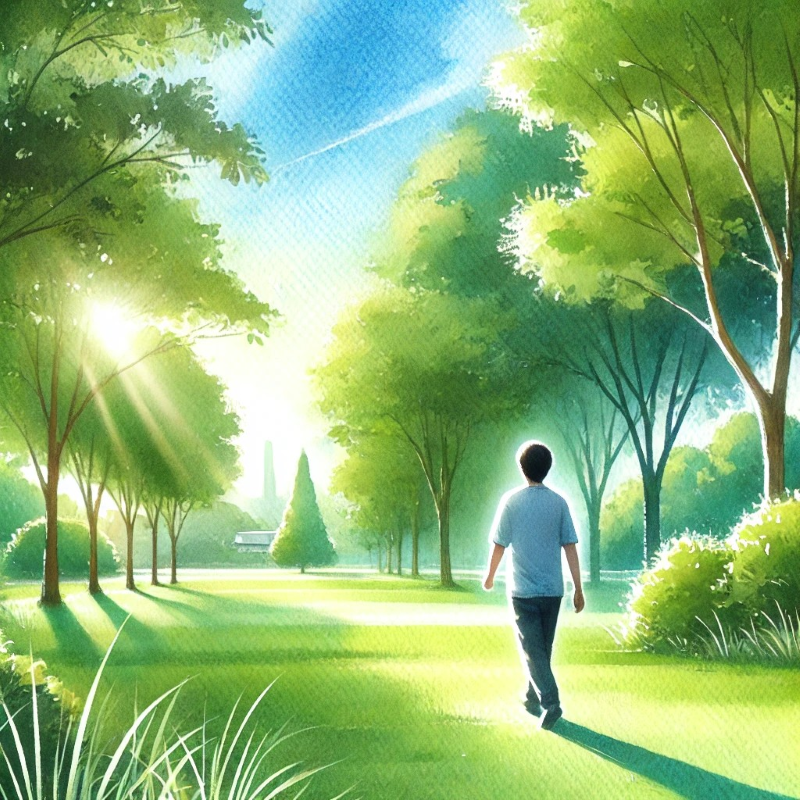Move More, Live Better

Orthopedic surgeons, often see injured patients in situations where a surgery such as an ACL reconstruction or knee replacement can offer them a solid chance at a return to an active lifestyle. However, the majority of adults seen in the office have not had any trauma or injury—they have more run-of-the-mill aches and pains. These folks often think that a “simple” surgery will get them back to their sedentary, pain-free life.
This is not the case. I often have to explain that a significant portion of adult joint or tendon pain is due to the effects of poor overall health and lack of movement, rather than any mechanical issue such as a meniscus tear. The human body is a complex set of interrelated processes—one system affects all of our other systems, and very few issues within the human body exist in isolation. For instance, the incidence and progression of osteoarthritis is much higher in people with metabolic diseases such as fatty liver and diabetes. Along these lines, pain is often a symptom of a sedentary lifestyle—like other machines, the human body rusts and seizes up if it’s sitting still.
The cure for a sedentary lifestyle is simple: move more. Movement is crucial for maintaining health and well-being. Regular physical activity helps control weight, reduces the risk of chronic diseases such as heart disease, dementia, type 2 diabetes, and certain cancers, and improves mental health and mood. But I’ve noticed that, while most people recognize that it would be better to exercise, they also believe that to be fit, they must engage in intense, strenuous activities that they may not enjoy or feel capable of maintaining. They understand the need to work out, but the thought of sweat, pain, exhaustion, and hauling themselves to the gym turns them off. It doesn’t have to be that hard, and one of the simplest and most accessible forms of exercise—walking—often goes underappreciated.
Despite the rants of a few loud social media know-it-alls, walking is indeed exercise. It confers significant benefits for all-cause mortality, fitness, and overall health. If a medication could deliver these results, we’d all be on it.
In fact, I often write a walking prescription in the office. It’s straightforward: Get out 2-3 times a day for 20 to 30 minutes. On the weekends, try to do one longer walk. If you’re motivated by numbers, as little as six to eight thousand steps per day yields impressive results. The associated decrease in rates of heart disease, dementia, and type 2 diabetes is upwards of 15-30%. Many of my patients have gone on to lose significant weight; more importantly, they found that walking was the gateway to other healthier lifestyle choices that they ultimately adopted.
This might seem like too little exercise for you—that’s very possible. Keep it up, if so. But a common issue in my office is that people do not recognize that their fitness levels are declining. Aging-related loss of fitness occurs slowly over time. Far too many believe this is a problem specific to the elderly. It’s not. Are you short of breath on stairs? Can you do 20 or more chair squats in 30 seconds? 20 pushups? The effects of aging begin to accrue in our 40s, even if you may not begin to notice them until far later.
Fitness is a lot like a retirement account. The more muscle mass and the higher our VO2 max and aerobic fitness that we bring into our later decades, the more we have to withdraw. Concerningly, our youngest are no longer as active as they have been in earlier decades. If these children reach their 40s with a poor level of fitness and strength, the downstream consequences of aging will reveal themselves far sooner and more dramatically than is already happening.
The good news is that living a longer and healthier life isn’t very complicated. A solid plan includes movement, lifting something heavy on occasion, quality sleep, home-cooked meals, controlling your blood pressure and LDL cholesterol levels, minimal alcohol, socializing, and finding a sense of purpose in your life. A quick glance through Instagram will make you think that the magic occurs via cold plunges, sauna, supplements, delaying your morning coffee, and being in the sun. These things get clicks and likes, and maybe they make some difference at the margin, but there are no medications, supplements, or procedures that can match the impact of movement on our ability to live longer. And the easiest way to move is to go for a walk.
Keywords: sedentary lifestyle, joint pain, ACL reconstruction, knee replacement, overall health, movement, exercise, walking benefits, physical activity, osteoarthritis, metabolic diseases, heart disease, dementia, type 2 diabetes, fitness levels, aging, muscle mass, aerobic fitness, chronic diseases, mental health, healthy lifestyle.
SEO Keywords: sedentary lifestyle, joint pain, overall health, physical activity, healthy lifestyle
AI-generated medical content is not a substitute for professional medical advice or diagnosis; I hope you found this blog post informative and interesting. www.parkiesunite.com by Parkie
DALL-E Prompt: A serene watercolor painting of a person walking through a lush, green park. The scene is peaceful with vibrant trees, a clear blue sky, and gentle sunlight filtering through the leaves. The person is smiling, appearing relaxed and rejuvenated, capturing the essence of the joy and health benefits of walking.